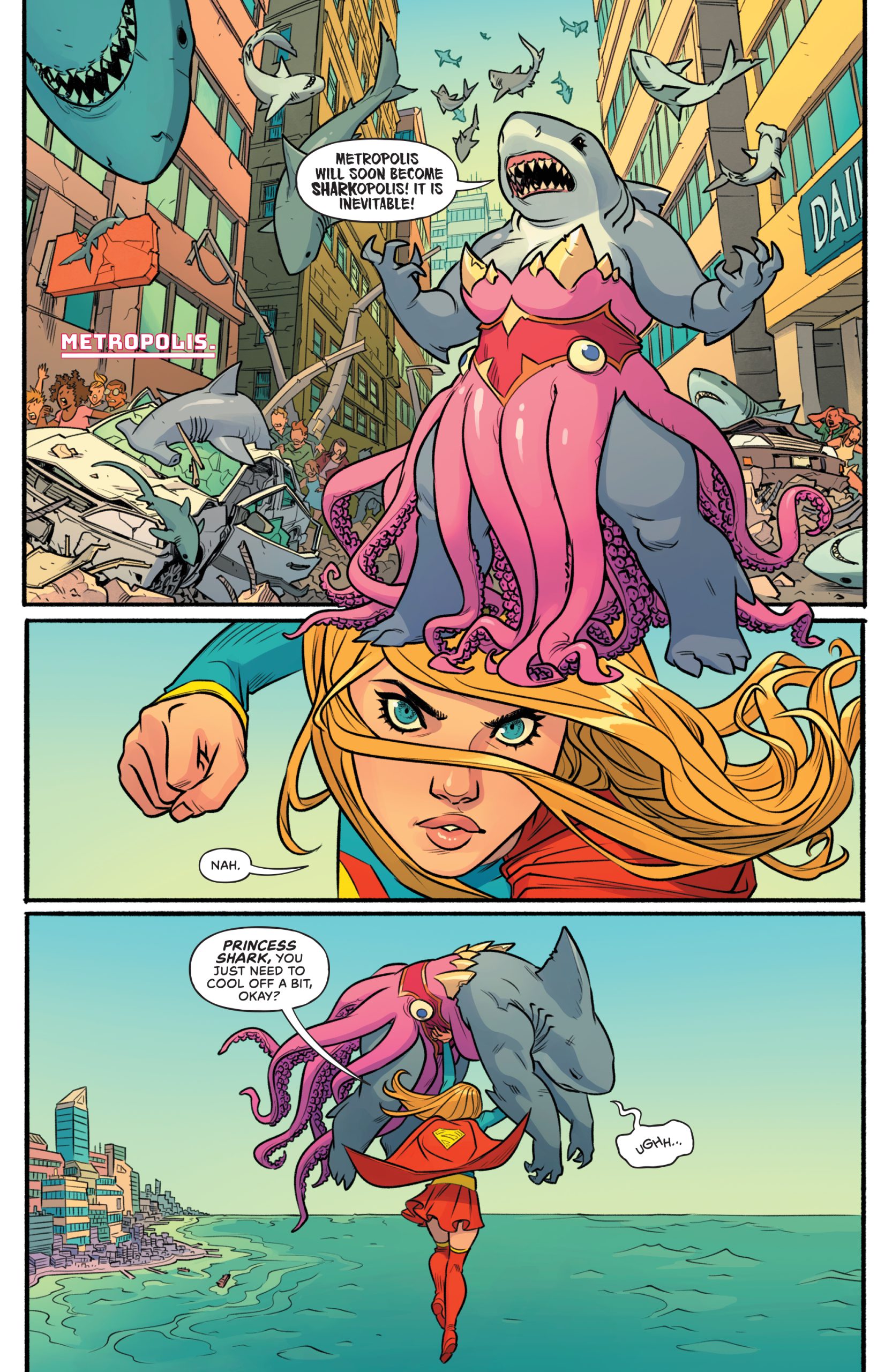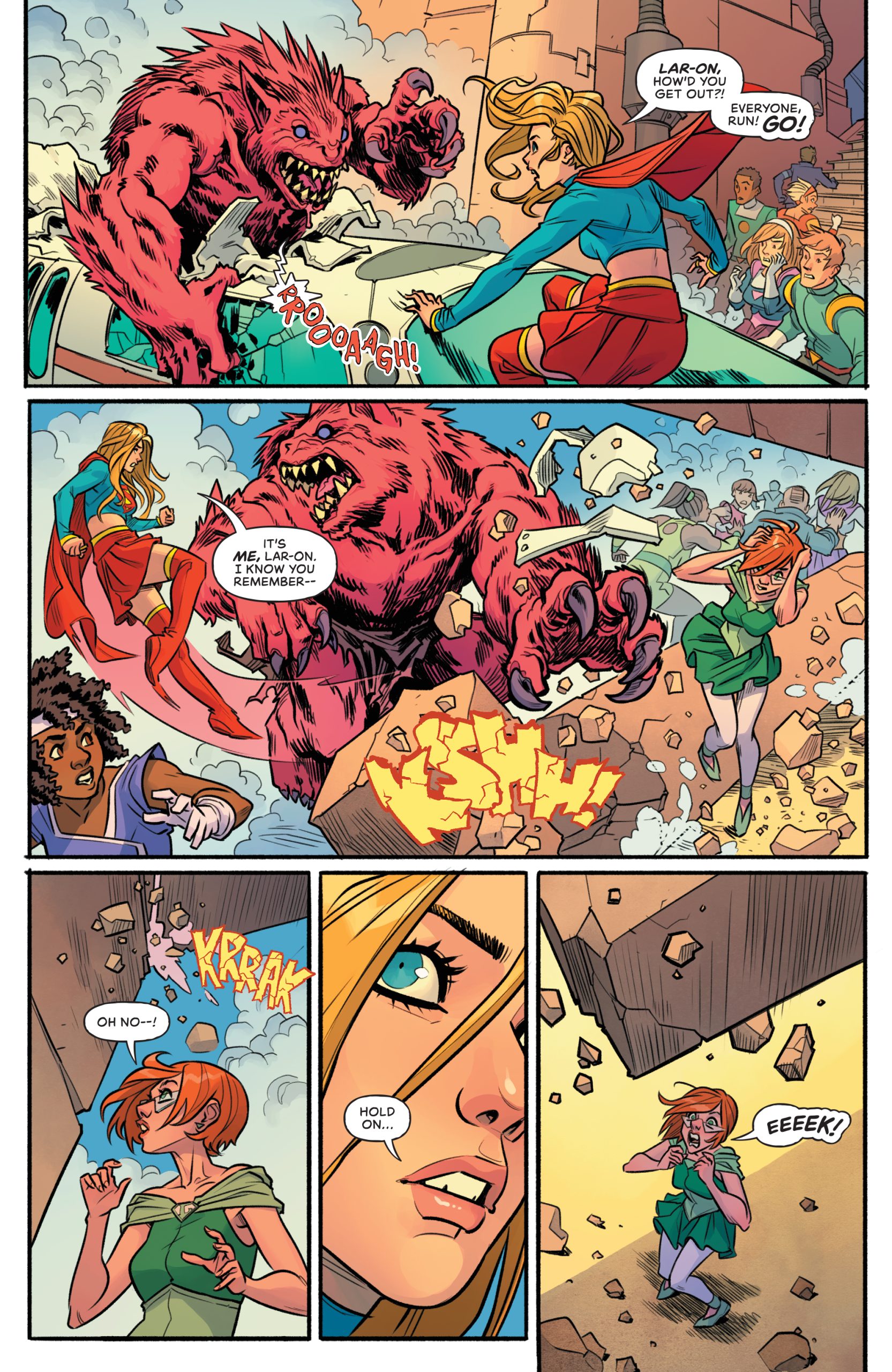Review: Supergirl #1 [Editor’s Note: This review may contain spoilers]
[Editor’s Note: This review may contain spoilers]
Writer: Sophie Campbell
Art: Sophie Campbell
Colors: Tamra Bonvillain
Letters: Becca Carey
Reviewed by: Matthew B. Lloyd
Summary
Supergirl goes back to Midvale and attempts to recapture her identity as Linda Danvers, but there’s a problem. There’s already a Supergirl in Midvale!
Positives
There have been a lot of iterations of Supergirl over the years since her first official appearance in Action Comics #252 (May 1959). That means, whenever there is a new version or “cosmic shenanigans” that impact the history of the DC Universe. It’s been a while since DC has addressed Supergirl’s history. With Summer of Superman inspiring this new series, writer/ artist Sophie Campbell does a very nice job of brining in some old continuity to Supergirl’s history into Supergirl #1- and there are probably more I haven’t caught. We not only get her adoptive parents, the Danvers. In this case, their names have been tweeked from Fred and Edna (they were Fred and Sylvia in the Matrix/ Linda Danvers era) to Jeremiah and Eliza (from the CW TV series with Melissa Benoist).

Campbell also brings back the bit of Supergirl’s past when Linda was an actress on a Soap Opera, “Sacred Hearts.” Additionally, Supergirl has Streaky (supposedly retrieved from Power Girl off panel) and Krypto in tow. These are nice touches as well as the attempt to fill readers in a very long intro box. I applaud DC and Campbell for making the attempt assimilate different takes into this version, brining in both classic and more recent additions to Supergirl’s lore. While the classic refugee of Argo City element is present, so is the plot point from the Jeph Loeb/ Michael Turner version in which she is technically older than Superman because she was older when they were launched (around the same time). The intro box even name checks the “Daring Adventures” title of her much loved by Supergirl fans pre-Crisis, 1980’s series- The Daring New Adventures of Supergirl penned by Paul Kupperberg.

This continuity work extends to bits and pieces of recent continuity references from Mark Waid’s “Phantoms” storyline from Action Comics as well as the Supergirl back up that appeared in those issue. This firmly sets Supergirl #1 in the realm of current status quo even mentioning fallout from last year’s very disappointing Absolute Power.
Negatives
Sophie Campbell’s art style seems more suited to indie work or even an Archie style series. This makes the book feel distinctly other from traditional superhero comics and feel like an outlier in the current Superman line of books. It provides a lot of whiplash as Supergirl appears so young and is again having confidence issues when she considers “what she would do” versus “what Superman would do.” I feel like she should be beyond this especially considering how she’s been portrayed recently in the Superman line with “House of Brainiac’ being a particularly good example. Kara seems less confident and unsure of herself and while it fits with the “imposter theme” that’s at the center of this storyline, it’s not actually informed by her current position as the #2 of the Super-family above Jon, Kon or even Lois. Even if details tells us she’s at least mid-20’s, she looks and feels late teens.

The problem with knowing too much about creators is that it can influence how one reads a story. When this series was first announced I knew nothing about Sophie Campbell. I’m sure I’d heard her name, but couldn’t think of any work she’d done. As I found out more in the lead up to Supergirl #1, I learned she is a transwoman. Knowing this, makes it difficult to judge some of the thematic elements of this issue. Some will say “self-insert,” I will say “poorly executed and heavy handed.” It doesn’t help that the identity theme that is associated with this is worn out for Supergirl.
Kara struggles with what name to go by when she returns to Midvale. Linda because that’s how she was known when she lived there or tell people her name is Kara and go by that? While this does tie thematically to the feelings of inadequacy that are referenced and the “imposter theme,” because knowing about Campbell’s personal life it feels like her decisions for these elements are about her own identity journey as opposed to anything that’s really relevant to where Supergirl is in her own journey. It’s part of the reason Supergirl in this issue feels younger and less mature as opposed to how she’s been portrayed in current Superman comics as mentioned above.

Negatives Cont’d
This theme was just tried in Leah Williams’ Power Girl that ended last month and it definitely feels derivative. It’s ironic that over the past three years DC has made Power Girl and Supergirl seem more alike than ever when the plan was to accentuate their differences. These differences had always been pronounced until Williams began writing Power Girl. Power Girl had always been confident, competent a bit brash, “take no crap” and had even mentored Supergirl pre-Infinite Crisis (that Loeb/ Turner version). Williams turned that 180 degrees making her insecure, unsure of herself, feeling like an imposter and changing her Earth name from Karen Starr to Paige Stetler in search of a new identity. Campbell appears to pull Supergirl back from the more confident and comfortable portrayal she’s received in those same Superman comics I’ve already mentioned, and it almost feels like she’s lifted some of Williams’ plot elements and themes. These themes work better for Supergirl because she’s been reinvented so many times already and are more central to her character, but it’s not what a new Supergirl series needs to be about right now.

The problem here is that now two characters who are multiversal doppelgangers and who ALWAYS felt like distinctly different characters, now seem interchangeable. It proves that DC Comics is completely oblivious to what makes these characters unique, why readers like them and how to utilize them. It appears that they are only good for “coming of age, “finding oneself,” and “overcoming others expectations” stories. They will not be allowed to grow, develop and mature and if they do they will be regressed because DC’s limited vision means a character can only ever be one thing.
Verdict
Unfortunately, the best things about Supergirl #1 are the nostalgia and the deep continuity references- but it does go a long way in making this issue enjoyable. The tone and visual appearance doesn’t seem to fit with the current Superman line in general. It also doesn’t help that this whole “imposter storyline” just made an appearance in Power Girl #20. Despite the fact that the current continuity is in play and it’s clear she’s at least in her mid-20’s, thematically it feels as if Kara hasn’t matured much from her younger self and visually it makes it difficult to believe she’s older than 17. It’s uneven at best, and the nostalgia can only support this for so long.
